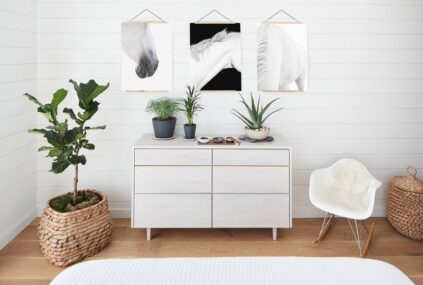
5 Things To Keep In Mind When Looking For A Green Home
A Sustainable Lifestyle Starts In The Home
Now more than ever, people are interested in the trend of greener living. This applies not only to a healthier and more active lifestyle for you but also creating an environment at home that betters your community and the planet. One of the easiest and most effective ways you can transition to a greener lifestyle is by concentrating on making your next home sustainable.
Whether you’re looking to buy or build from scratch, reducing energy use and changing your general consumption habits all begin in the home. This can be done easily if you know what to look for and what can have biggest impact.
1. Understand What Sustainable Actually Means
Before you jump into viewings and offers, make sure you understand the concept of sustainability and how that applies to the purchase of your new home. Always ask yourself a series of questions before you make your final decision — whether that be for the actual home or for materials and improvements that may be necessary:
What are the sources of the materials?
Can they be reused, renewed or recycled?
Do they meet energy-efficient requirements to reduce my carbon footprint?
Are they sustainable over the long term?
These questions are all key to the holistic approach and success of being truly sustainable and maintaining a greener lifestyle that also helps your pocketbook. By answering “yes” to each question in the series, you know you will be on the right track to create that synergistic relationship necessary for your green home.
2. Equip Your Home with the Right “Bones”
This applies to the electrical system you install as well as the heating and cooling units. When you look at it from a big-picture perspective, the heating and cooling are all tied to your electrical choice. Choosing renewable energy sources like solar or wind power at the backbone of your new home will have a huge impact on the overall success of your sustainability efforts.
Tesla is a pioneer in this department, and if you can afford the initial investment in your new construction or remodel, it is well worth it to install solar panel glass tiles for a power source and to have the storage of that energy at your disposal with the Tesla Powerwall. You’ll be able to go off the actual grid and sustain your home independently.
A bonus, the new glass tiles are incredibly beautiful and come in varying design styles. A win-win for the decorator and environmentalist in you.
3. Recognize Where Weak Points Might Arise
This is especially important if you are buying and not building. It’s important to be aware of where energy efficiency can be lost — despite your efforts to create clean sources. If you’re over-consuming because you have weak window and door seals, you’re not supporting a sustainable environment.
Interestingly enough, knowing where to look for weak spots in energy efficiency also tends to coincide with the actual security of your home. Make sure to do a checklist on each viewing. You’ll save yourself money and possibly even protect yourself from a burglary.
4. Ethically Source Your Materials
Be sure you are clear with your contractor — or better yet, make sure you choose a contractor with your same goals — to ensure that practices and materials won’t have a harmful effect on the environment. This includes the components of solar panel choice, such as wiring, paint, lumber, cleaning materials and carpeting. All of these things either contribute to or detract from your goal of creating a green home.
Know what your contractor should be using and shopping for during the construction or remodel, and don’t worry. This doesn’t actually limit your choices. There are plenty of great, sustainable and ethical products that can replace less environmentally friendly options.
Bamboo flooring or reclaimed wood are both sustainable options, and companies such as Interface make green carpeting a reality in an industry that can be one of the biggest petrochemical polluters out there.
5. The Devil Is in the Details
Finally, you need to follow through with the same series of questions all the way down to the very last detail. What does this mean? Well, in summary, you need to make smart decisions about the light bulbs you choose for your light fixtures or make sure you design your home garden with the end goal of feeding and fertilizing.
Look for furniture and small décor from local businesses to help support the local economy. Grow and compost your own fruits and vegetables. If you follow through with the idea of an interconnected relationship that goes from the inner bones all the way to the decorated façade, you’ll be able to have the dream home you’ve always wanted while being gentle with the planet and creating a sustainable living environment that will endure over the long term.

